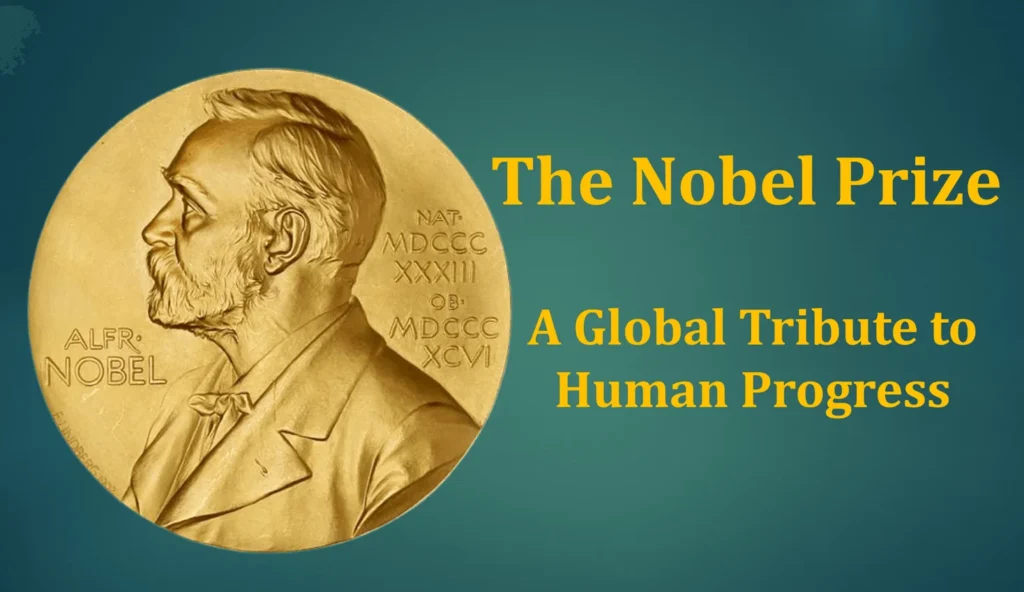
Over the course of more than a century, individuals who have made really significant contributions to mankind have been honored with the Nobel Prize. They give out these prizes in different areas like science (physics, chemistry, and medicine), writing, and for working towards peace. Alfred Nobel, the prize’s namesake, was the finest scientist of his era. It is a method to express thanks to those who have made significant contributions to both humanity and the environment. This article will examine the unique awards’ fascinating significance and history, as well as their monetary value and the outstanding 2023 Nobel Prize recipients.
Alfred Nobel’s Impact
Before we move on to discuss about the Nobel Prize let’s have a brief introduction about Alfred Nobel. He was born in Sweden in 1833 and was an incredibly smart chemist, engineer, and inventor. He’s the reason we have these prizes today. He held over 350 patents during his lifetime, with inventions like dynamite revolutionizing industries and shaping the modern world.
In 1895, Nobel wrote his last will and testament, outlining his desire to establish the Nobel Prizes. In his will, he bequeathed his “remaining realizable assets” to fund these prizes, which became known as the “Nobel Prizes.” The areas in which he wished to honor excellence included Physics, Chemistry, Physiology or Medicine, Literature, and Peace. This visionary testament was a testament to Nobel’s commitment to serving humanity, even beyond his lifetime.
The Birth of the Nobel Prizes
Nobel Prizes were first awarded in 1901, thanks to the endowment provided in Nobel’s will. These prizes were a means to recognize and encourage those who had dedicated their lives to advancing knowledge and working for the betterment of society. The tradition of the Nobel Prizes began with an enduring commitment to honoring outstanding contributions across diverse fields.
The Expansion of the Nobel Prizes
The Nobel family grew in 1968 to meet the expanding requirements of the world society. The Nobel Prize in Economic Sciences was founded in its inaugural year by the Sveriges Riksbank. It is a Swedish central bank. As a consequence, a new era of the Nobel Prizes, which were then given out in six different areas, began.
One Award may not be shared by more than three individuals, according to a unique regulation for the Nobel Prizes. The Nobel Peace Prize, however, is an exception because it can be given to groups with more than three members. This structure ensures that the awards maintain their prestige and exclusivity.
An Inspiring Journey of Excellence
The Nobel Memorial Prize in Economic Sciences has been given 609 times to 975 people and 25 organizations since it was established. This recognition is a reflection of the outstanding achievements that the recipients of these distinguished awards have made.
Remarkable Multiple Laureates
Some people and organizations have received many Nobel Prizes in the history of the award for their exceptional accomplishments. Frederick Sanger, Linus Pauling, John Bardeen, and Marie Curie are on the list. To date, five individuals and two organizations have received multiple Nobel Prizes, a rare achievement that exemplifies sustained excellence in their respective fields.
A Glimpse into the Nobel Prize
The Nobel Prize consists of several elements that contribute to its historical significance and grandeur. Let’s delve into the intricate details that make up this prestigious award:
The Monetary Value
The monetary aspect of the Nobel Prize has always been of great interest. In 2023, the Nobel Prize Money amounted to 11 million Swedish Kronor (SEK), which translates to 986,000 US Dollars and approximately 8.1 crore Indian Rupees. The Nobel Foundation determines the monetary award each year with the aim of maintaining a substantial incentive for Nobel Laureates.
The Nobel Prize Medals
One of the most iconic elements of the Nobel Prize is the Nobel Prize medals. Each medal features an image of Alfred Nobel on the obverse, symbolizing the spirit of innovation and service to humanity. While the medals for Physics, Chemistry, Physiology or Medicine, and Literature have identical obverses, featuring Nobel’s image and the years of his birth and death, the Peace Prize medal and the Economics Prize medal have a slightly different design.
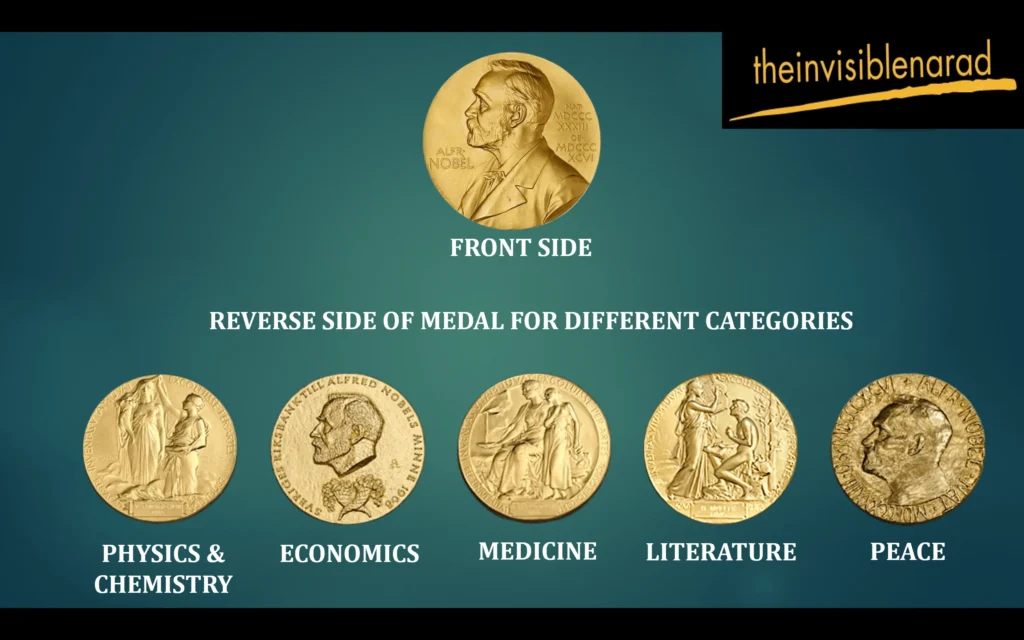
The reverse side of the medal varies depending on the institution awarding the prize, and medals produced before 1980 were struck in 23-carat gold. Since then, they have been struck in 18-carat green gold plated with 24-carat gold. The weight of each medal varies with the fluctuating gold market but averages about 175 grams. The diameter of the medal is 66 millimeters, with a thickness varying between 5.2 millimeters and 2.4 millimeters.
The Nobel Prize Diploma
Nobel laureates receive a diploma, a testament to their exceptional contributions, directly from the hands of the King of Sweden or, in the case of the Peace Prize, the chairman of the Norwegian Nobel Committee. The institutions that bestow awards create special diplomas for the laureates who receive them.
The diploma includes a picture and text in Swedish that states the name of the laureate and typically provides a citation explaining why they received the prize. It’s worth noting that none of the Nobel Peace Prize laureates have ever had a citation on their diplomas.
2023 Nobel Prize Laureates
The Nobel Prizes in 2023 celebrated outstanding individuals in various fields for their remarkable contributions to humanity.
1. Nobel Prize in Physics 2023
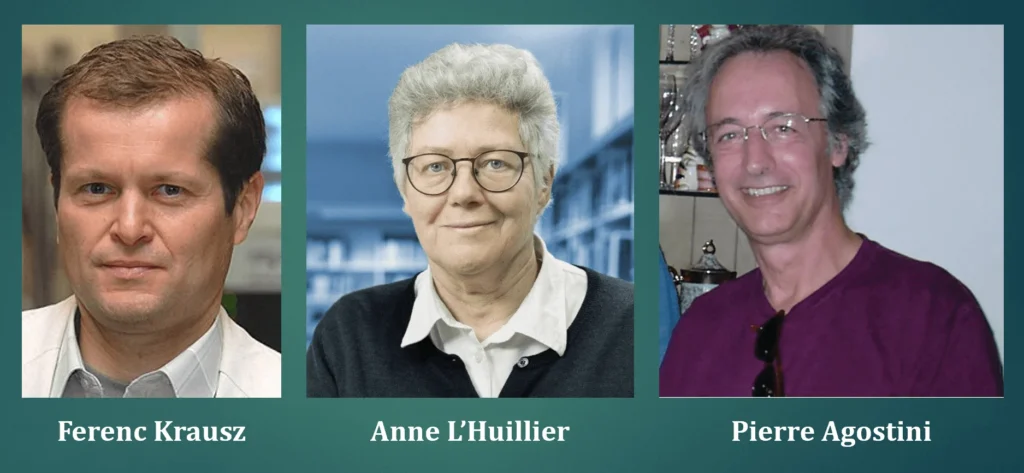
- Laureates: Pierre Agostini (France), Anne L’Huillier (France) and Ferenc Krausz (Hungary)
- Achievement: Experimental methods that generate attosecond pulses of light for the study of electron dynamics in matter.
- Impact: The laureates explored the intricate world of electrons inside atoms and molecules, offering a means to measure the rapid processes in which electrons move or change energy.
2. Nobel Prize in Chemistry 2023

- Laureates: Moungi G. Bawendi (USA), Louis E. Brus (USA), and Alexei I. Ekimov (Russia)
- Achievement: Discovery and synthesis of quantum dots, nanoparticles with size-dependent properties.
- Impact: Quantum dots have the potential to revolutionize fields such as LED lighting and medical imaging, providing a tool to guide surgeons when removing tumor tissues.
3. Nobel Prize in Literature 2023
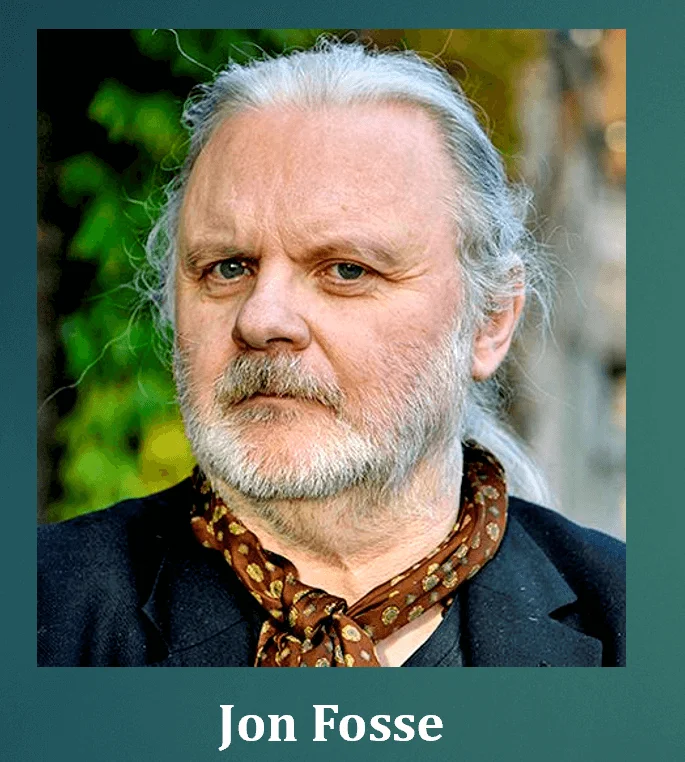
- Laureate: Jon Fosse (Norway)
- Achievement: Innovative plays and prose that give voice to the unsayable.
- Impact: Fosse’s work stands out as a beacon of literary excellence, representing the best in idealistic literature.
4. Nobel Peace Prize 2023

- Laureate: Narges Mohammadi (Iran)
- Achievement: Brave fight against the oppression of women in Iran, and a tireless effort to promote human rights and freedom.
- Impact: Mohammadi’s extraordinary struggle, despite tremendous personal costs, serves as an inspiration for human rights advocates worldwide.
5. Nobel Prize in Physiology or Medicine 2023

- Laureates: Katalin Kariko (Hungary) and Drew Weissman (USA)
- Achievement: Pioneering work on mRNA vaccines, playing a vital role in fighting COVID-19.
- Impact: Kariko and Weissman’s groundbreaking invention helped prevent and treat COVID-19, a pandemic that posed a significant threat
6. Nobel Prize in Economics 2023
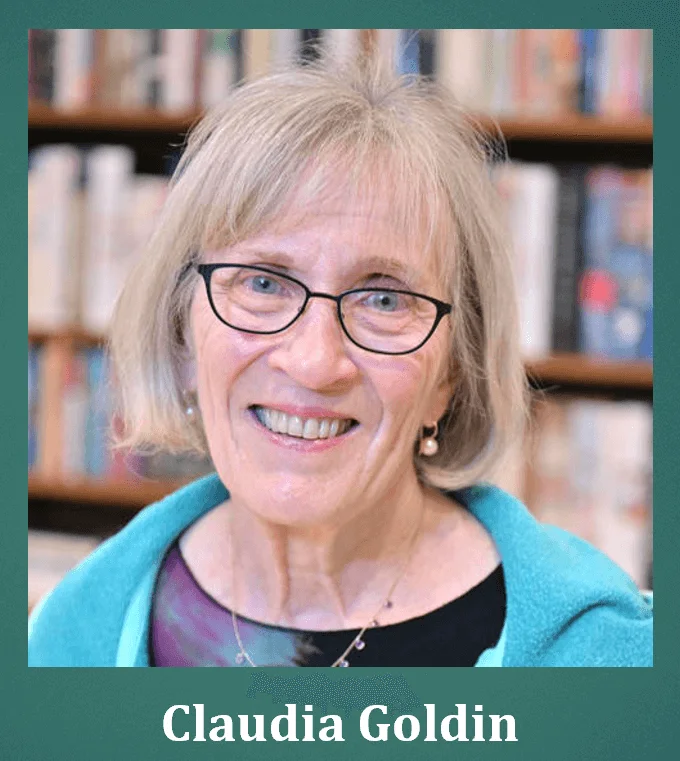
- Laureates: Claudia Goldin (USA)
- Achievement: Enhanced our understanding of women’s labor market outcomes
- Impact: Claudia’s study has modified the knowledge about women’s employment outcomes and will future assist in better planning and usage of women’s labor
The winners of the 2023 Nobel Prizes are shining examples of what perseverance and creativity may accomplish. Their extraordinary achievements serve as both a collective reminder of the human spirit’s capacity to overcome limitations and bring about positive change in the world as well as a monument to each of their particular talents.
Conclusion
Generations of scientists, authors, activists, and peacemakers have been motivated to achieve greatness in their areas by the Nobel Prize’s rich history and celebration of brilliance. It is a reminder to everyone that we can all work together as a global community to address the most pressing challenges affecting our planet. It embodies Alfred Nobel’s goal of honouring people who have helped mankind.
The Nobel Prize inspires us to keep pursuing knowledge, creativity, and social progress as we look to the future. It serves as a light of hope and inspiration. It is a legacy that will always serve as a reminder of the grandeur that resides inside every one of us, encouraging us to push the bounds of human achievement, spur good change, and carry on providing exceptional services to humanity.
